Miami’s transformation into a creative capital is a story of reinvention. This article explores how Miami grew into a global hub for art and fashion, examining its art renaissance (think Art Basel and Wynwood Walls), its rise in the fashion and modeling industry, the interplay of art with nightlife and celebrity culture, the crucial influence of immigrant communities, and ultimately the city’s worldwide reputation for creativity.
Jump to: Miami's Rise • Fashion and Modeling • Art, Nightlife and Culture • Immigrant Cultures • Creative Industries • FAQ
TL;DR – Miami’s Creative Rise
- Art Basel Miami Beach launched in 2002, sparking global art attention
- Wynwood Walls turned a warehouse district into a street art mecca
- South Beach’s 1990s supermodel era made Miami a fashion hotspot
- Miami Fashion Week and Swim Week cemented global style status
- Immigrant cultures and nightlife fused art, music, and fashion
More on Miami:
Miami Rise as an Art Hub
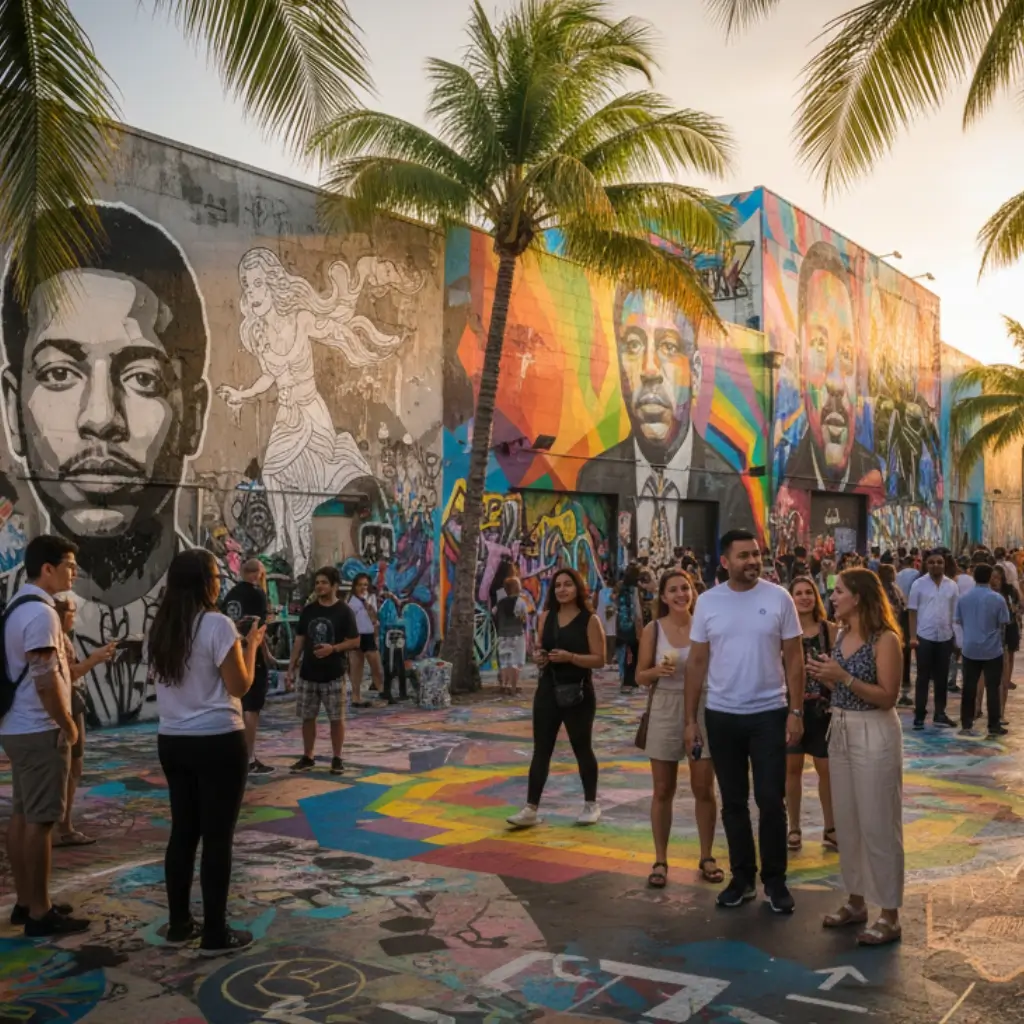
In the late 1990s, Miami was hardly on the art world’s radar. The city had “little cultural infrastructure whatsoever” – in the words of one local art patron, “we were a wasteland here”.
There were fewer than 10 art galleries in the entire county , and Miami’s image revolved more around sun and fun than serious culture. That began to change in 2002 with the launch of Art Basel Miami Beach, the American edition of the famed Swiss art fair.
Art Basel Miami Beach (ABMB) immediately drew international art dealers, collectors and crowds; since its inception, the fair has attracted over 80,000 visitors each year, from artists and gallerists to celebrities and tastemakers. It quickly became “the splashiest cultural event on Miami’s social calendar,” complete with high-profile parties and VIP events galore. By bringing the global art elite to South Beach every December, Art Basel effectively put Miami on the map as a serious art city.
As one commentator noted, ABMB “raised the profile of contemporary art in popular culture more than almost any single other entity” , transforming Miami from a relative artistic backwater into a must-visit stop on the international art circuit.
Crucially, Art Basel’s influence also sparked a local art boom. Galleries proliferated across the city, and major museums were founded or expanded in Art Basel’s wake (the Pérez Art Museum Miami and Institute of Contemporary Art among them). Nowhere is the art-driven revitalization more evident than in Wynwood, a once-neglected warehouse district just north of downtown.
In 2009 – as Art Basel’s success was drawing art lovers to Miami Beach – visionary developer Tony Goldman turned his sights on Wynwood’s graffiti-covered blocks. Goldman saw potential where others saw blight: “Where I saw warehouses, Tony Goldman saw an outdoor art museum” said a local tourism official. During Art Basel 2009, Goldman unveiled Wynwood Walls, an open-air showcase of street art and murals.
He invited internationally renowned graffiti artists (including Shepard Fairey, Kenny Scharf and Swoon) to paint Wynwood’s building walls, “dramatically changing the face of Miami’s Wynwood community, from a desolate warehouse district to one of the city’s most popular public art attractions”. Each year since, new murals debut during Miami Art Week, and the area’s growth has exploded alongside its art.
Trendy restaurants, galleries, and creative businesses moved in, yet the vibrant murals remain Wynwood’s soul. The neighborhood today is “one of the most iconic, most visited neighborhoods in the city” according to Miami’s mayor , drawing millions of visitors who wander its kaleidoscope of murals with cameras in hand.
Wynwood’s success even inspired similar art districts worldwide, proving how one bold idea – “one idea can change a neighbourhood, but also change an entire viewpoint of an art form” as Goldman’s daughter put it – can catalyze urban renewal.
From the prestigious halls of Art Basel at the Convention Center to the gritty, colorful streets of Wynwood, Miami’s art scene has blossomed into a world-class hub. The city now hosts dozens of satellite art fairs during Miami Art Week each year, and events like Art Basel have become civic institutions.
On a given December night during Basel, the atmosphere is electric: galleries throw open their doors for receptions, crowds spill onto Collins Avenue in South Beach, and murals in Wynwood turn into backdrops for fashion shoots and block parties.
What was once unthinkable – Miami as a contemporary art capital – is now reality. In just two decades, Miami’s art landscape morphed from virtually nonexistent to “a major contemporary art capital”, with insiders calling this “the Magic City’s remarkable development” in the art world.
Fashion and Modeling Hotspot
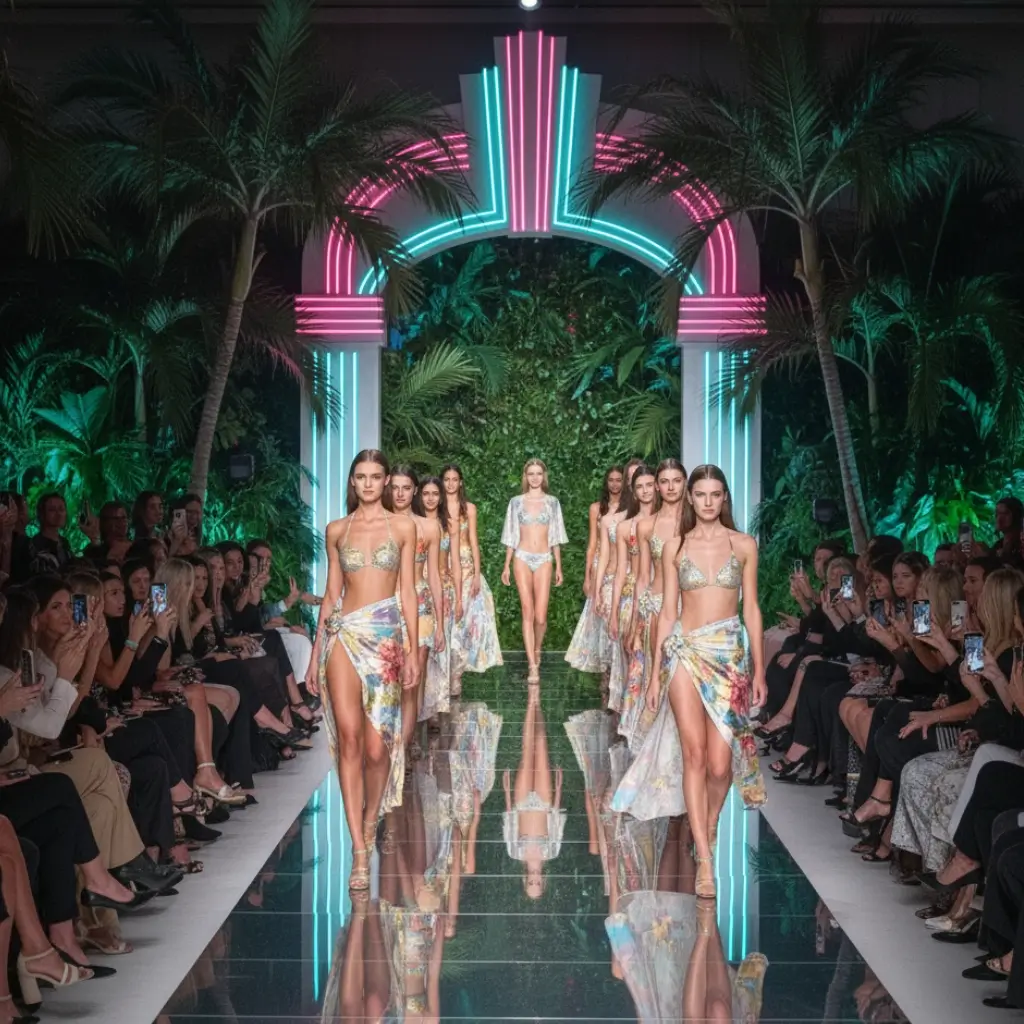
Miami’s emergence in the fashion world has been just as striking as its art ascent. Long before high-end designers opened shops in the Design District and stylists flocked to Art Basel parties, Miami was building a reputation as a fashion and modeling hotspot – albeit one with a unique, tropical flair.
In the 1990s, South Beach famously became a playground for supermodels, designers and celebrities. “If New York owned the ’80s… the ’90s belonged to Miami,” one observer recalls, “when artists, celebrities and designers flocked to South Beach for fun and sun. Fashion royalty and music royalty lived and played side by side… supermodels in bikinis spiked volleyballs in the sand”. Indeed, the ’90s saw designers like Gianni Versace make Miami Beach a second home, bringing an aura of couture glamour to Ocean Drive.
Versace fell in love with Miami’s pastel Art Deco charm and bold energy – and in turn, his presence supercharged the local fashion scene. As he set up a mansion in South Beach and even staged photoshoots here (publishing the famous “South Beach Stories” book in 1993), Versace “added jet fuel to the fashion transformation” already underway in Miami. Major modeling agencies began “sprouting like mushrooms” in the city , eager to sign talent for the steady stream of swimsuit catalogs and designer campaigns being shot on Miami’s sunny beaches.
The city’s iconic Art Deco streetscapes suddenly became backdrops for “every hot new [fashion] campaign”, as photographers took advantage of the tropical light and vibrant scenery. By the turn of the millennium, Miami was firmly established as the third pillar of the U.S. modeling industry (after New York and Los Angeles), known especially for commercial and swimwear modeling.
At the same time, Miami cultivated its own Fashion Week to showcase designers and attract industry insiders. In 1998, the first Miami Fashion Week (originally called Fashion Week of the Americas) was launched, focusing on Latin American and Caribbean designers. This niche made perfect sense for Miami – the city is a gateway to Latin America, and its multicultural style set it apart from the traditional fashion capitals.
Over the years, Miami Fashion Week (MIAFW) grew into the world’s largest fashion week for Latin American & Caribbean design talent. By the mid-2010s, it was being hailed as “the second largest fashion event in the United States” (after New York Fashion Week).
International names like Colombia’s Agatha Ruiz de la Prada and Venezuela’s Angel Sanchez have graced Miami’s runways, debuting their resort collections amid the palm trees. In a symbolic boost, actor Antonio Banderas even served as MIAFW’s honorary president in 2016, underscoring Miami’s rising fashion clout. Beyond MIAFW, the city also hosts the annual Miami Swim Week, a globally important showcase for swimwear and beachwear designers each July.
Here, the world’s top swimwear brands – and the models who wear them – converge on Miami Beach to set the trends for next summer’s bikinis and resort attire. The swimwear sector’s epicenter in Miami highlights how the city leveraged its “sunshine and style” to carve out a distinctive niche in global fashion.
What distinguishes Miami’s fashion scene is this fusion of cultures and a laid-back glamor. At a Miami runway show, you’re as likely to hear Spanish or Portuguese being spoken backstage as English, and the designs often burst with tropical colors or Latin flair. The front rows mix Hollywood celebrities with Latin American pop stars and local socialites.
The city’s fashion industry also feeds off its vibrant art and nightlife scenes – a synergy that gives Miami style its boldness. It’s not uncommon for a photoshoot to happen on a Wynwood mural backdrop or for a fashion party to coincide with an art gallery opening.
From the white linens of South Beach nightlife to the neon athletic wear on Ocean Drive skaters, Miami’s fashion sensibility is equal parts glamour and tropical fun. This sensibility has influenced global trends in resort wear and streetwear, proving Miami is more than just a beach town – it’s a bona fide fashion capital in its own right.
Art, Nightlife and Celebrity Culture
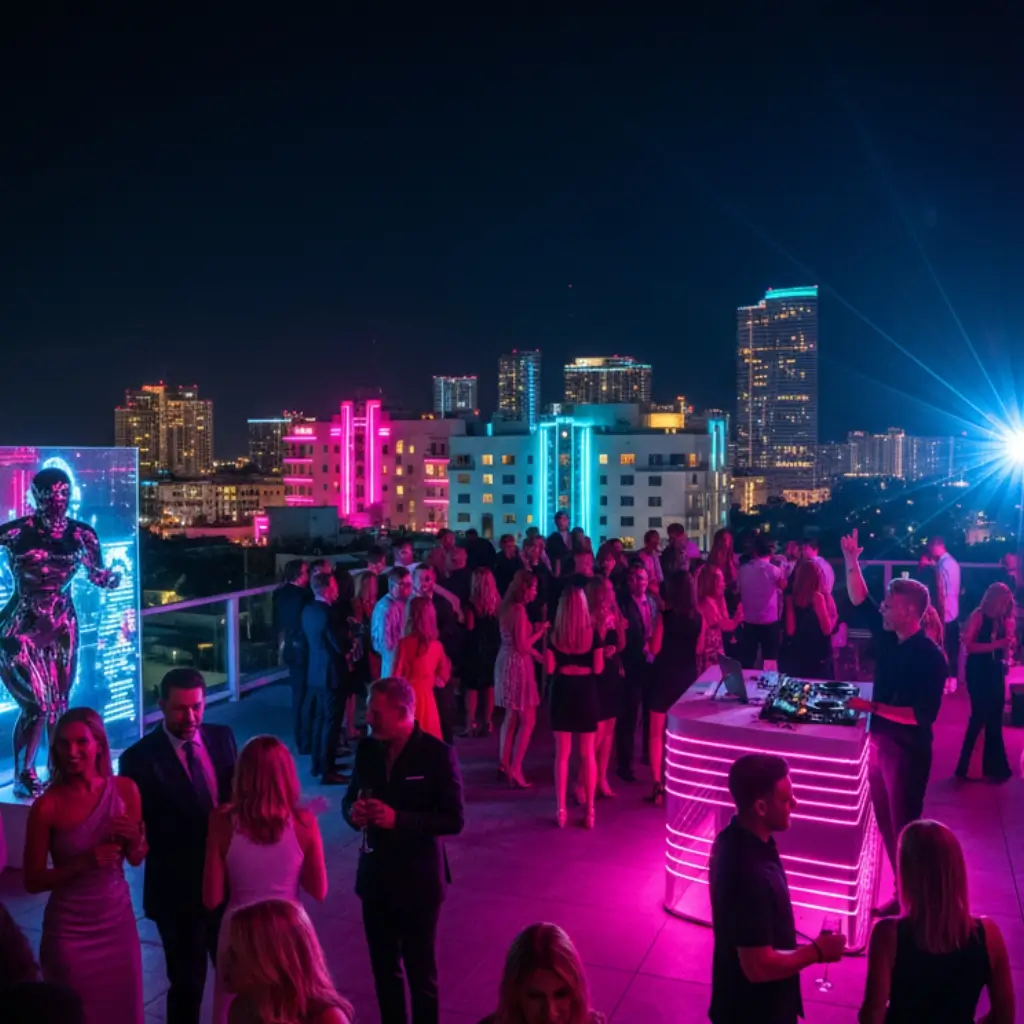
One of Miami’s defining characteristics is how art, nightlife, and celebrity culture have become deeply intertwined. In this city, creative expression doesn’t stay confined to galleries or runways – it overflows into the clubs, the parties, and the streets, often with famous faces in the mix.
A night during Art Basel exemplifies this blend: A high-profile contemporary art exhibition opening might be followed by an after-party at a South Beach nightclub, where internationally renowned DJs spin for a crowd that includes art-world luminaries, supermodels, musicians, and tech billionaires. Miami has long been a magnet for celebrities seeking both culture and a good time.
In the golden South Beach era of the ’90s, stars like Madonna, Sylvester Stallone, and Kate Moss mingled at spots like the Delano and Club Liquid, making headlines simply by reveling in Miami’s nocturnal scene. Today, that tradition continues each winter when Art Basel arrives. “The celebrities came right away” as soon as Basel did, recalls one nightlife impresario, noting that A-listers realized “it’s cool to be attached to certain artists, and they want a piece of that”.
Actors and musicians with artistic hobbies (from Adrien Brody painting in Wynwood to Swizz Beatz curating art shows) showcase their talents, blurring the lines between celebrity and artist. Meanwhile, fashion brands throw “Fashion Basel”-style events alongside the art fair – luxury labels host pop-ups and parties, bringing their ambassador supermodels and celebrities to town. This means that during Basel week, one might spot a top model or movie star perusing a gallery by day and dancing at a DJ Khaled afterparty by night.
Crucially, Miami’s nightlife itself nurtures creativity. The city’s clubs and lounges have historically been places where artists and designers find inspiration (and patrons). The famous South Beach club scene of the ’90s didn’t just attract celebrities; it helped birth trends. Fashion designers were inspired by the flashy clubwear and tropical chic styles on display, and many a creative collaboration was hatched over cocktails at the Versace Mansion or Nikki Beach.
Even Miami’s electronic music scene – with festivals like Ultra – contributes to the city’s creative aura, as music, art, and style collide under the neon lights. There’s a feedback loop: big cultural events draw celebrities, which brings media attention, which in turn elevates Miami’s profile and attracts more creative talent.
As David Grutman (owner of club LIV) put it, “Nothing compares to Art Basel in Miami Beach. Not a Super Bowl, not the World Series, not F1 — nothing is busier”, emphasizing how the art fair has become the city’s event of the year, turbocharging nightlife and celebrity influx.
The connection between art and nightlife is also literally built into Miami’s geography. The Design District and Wynwood host monthly art walks that end in block parties. Trendsetting venues like Soho Beach House or Faena host art installations as backdrops to their soirées. During Miami Art Week, every hotel lobby and rooftop seems to turn into a gallery or a stage.
This constant blend of high culture and pop culture gives Miami a unique vibe – sophisticated yet unapologetically fun. It’s a place where a serious art collector can chat with a DJ, where an emerging painter might get a break because a famous actor bought their work at a Basel fair, and where the boundaries between work and play are delightfully blurred. Creativity here wears party clothes after dark, and that interplay has only amplified Miami’s global allure.
Immigrant Cultures
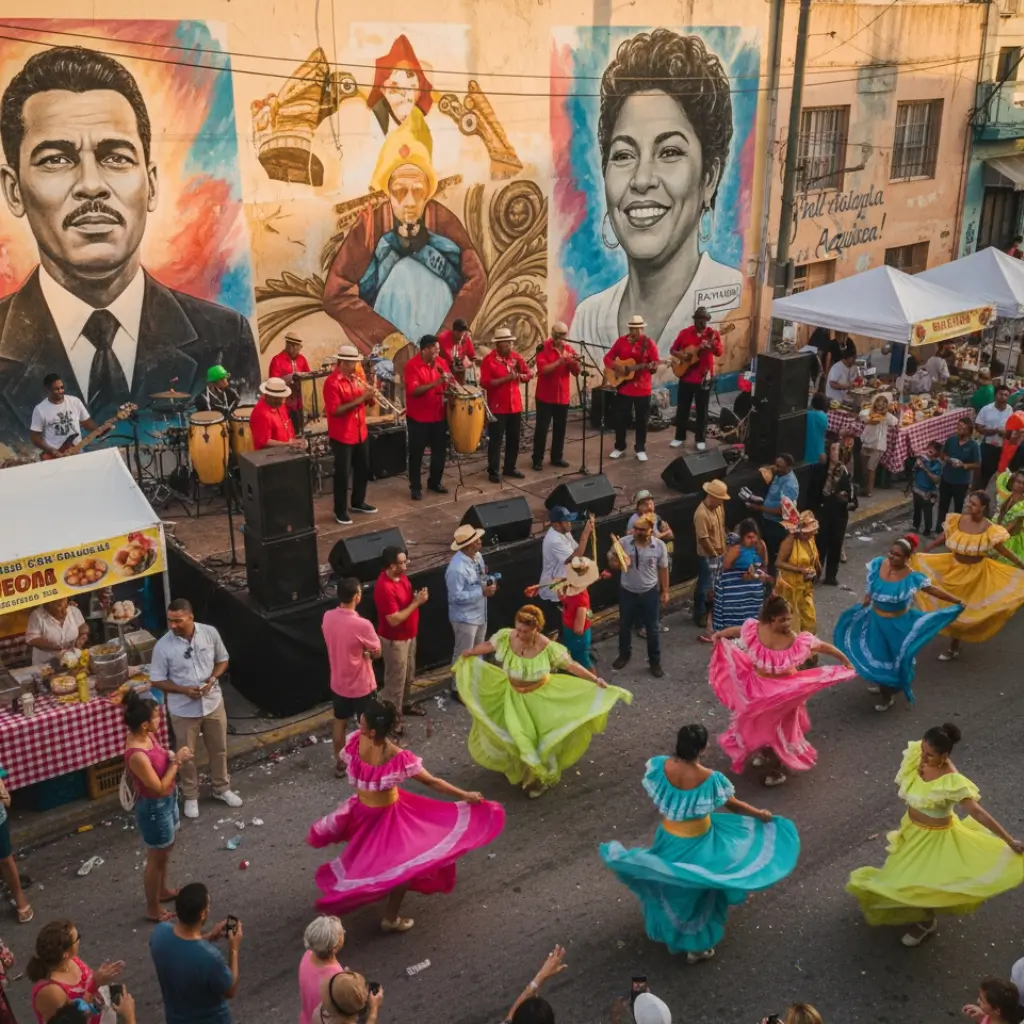
Miami’s creative scene would not be what it is today without the profound influence of its immigrant communities. Often called the “Capital of Latin America,” Miami is over 70% Hispanic, and more than half of its residents were born outside the United States.
This diverse tapestry – including large Cuban, Haitian, Colombian, Venezuelan, Brazilian, Dominican, and Jamaican communities, among others – has imbued Miami’s art and fashion with a distinct multicultural richness.
Immigrants have brought with them their artistic traditions, crafts, music, and style, creating a fusion that is uniquely Miami. As a local writer observed, “The bright colors and intricate designs that beautify this city are all thanks to the immigrant artists who pursued their passion fearlessly.” From the Caribbean Carnival costumes to the murals of Little Haiti and Little Havana, the city’s aesthetics brim with global influences.
Perhaps the most iconic example is Little Havana, the Cuban-American heart of Miami, where art and heritage intersect on every corner. Each month during Viernes Culturales (Cultural Fridays), Calle Ocho turns into an open-air arts festival celebrating Cuban and Latin American culture. “Local artists have an opportunity to share their culture and traditions through art” at this event. Strolling down the street, one encounters vibrant murals and mosaics depicting Cuban symbols – domino players, coffee cups, tropical fruits, cigars – alongside paintings of Cuban icons like poet José Martí and the legendary singer Celia Cruz.
The air fills with salsa music and the aroma of Cuban coffee, creating an immersive cultural experience. These artworks and performances are not staged for tourists; they’re a living expression of immigrant identity, transformed into public art. Similarly, in Little Haiti, brightly colored murals and the Caribbean Marketplace showcase Haitian folk art, vodou-inspired paintings, and Caribbean textiles, reflecting the creativity of Haitian Miamians.
This blend of art and identity gives Miami’s creative output a depth and authenticity that sets it apart from, say, the more Eurocentric scenes of New York or Los Angeles.
Immigrant influences are also evident in Miami’s fashion scene. Many designers in Miami come from Latin America or the Caribbean, or draw heavily on those cultures for inspiration. It’s common to see a runway collection in Miami that features guayabera shirts (a nod to Cuban menswear), tropical floral prints reminiscent of Colombian flora, or hand-embroidered details learned from Mexican artisans.
The city’s fashion weeks often highlight designers from across the Americas, giving a platform to talent that bridges cultures. Even Miami’s modeling industry reflects its diversity – models of Latin American and Caribbean descent are prominently represented, bringing different looks and backgrounds onto the global stage. The result is a fashion culture that feels inclusive and global.
Beyond the visual arts and style, immigrant communities have fostered Miami’s performing arts – from Afro-Cuban jazz to Caribbean carnival dances – which in turn influence the city’s visual aesthetic (for example, the bold poster art for music festivals, or the costumes that inspire ready-to-wear fashion prints). Miami’s creative DNA is inherently cross-cultural.
Artists here often describe their work as a dialogue between their heritage and their contemporary life in America. As one Cuban-American artist, Juana Valdés, noted, growing up Black and Cuban in Miami shaped her art to mix narratives and challenge boundaries.
The same could be said of Miami itself: the city’s art and fashion are a canvas painted by many cultures, a mosaic where each immigrant group has added its own color. This openness to the world – a direct result of being a city of immigrants – has made Miami a hotbed for artistic innovation and hybrid styles that you won’t find elsewhere.
In Miami, a mural can simultaneously pay homage to African roots and Caribbean stories, or a fashion designer can mix Colombian silhouettes with Miami neon flair – and it all feels natural. The city’s creative industries are, in effect, a celebration of immigration and the idea that diversity is Miami’s greatest muse.
Creative Industries
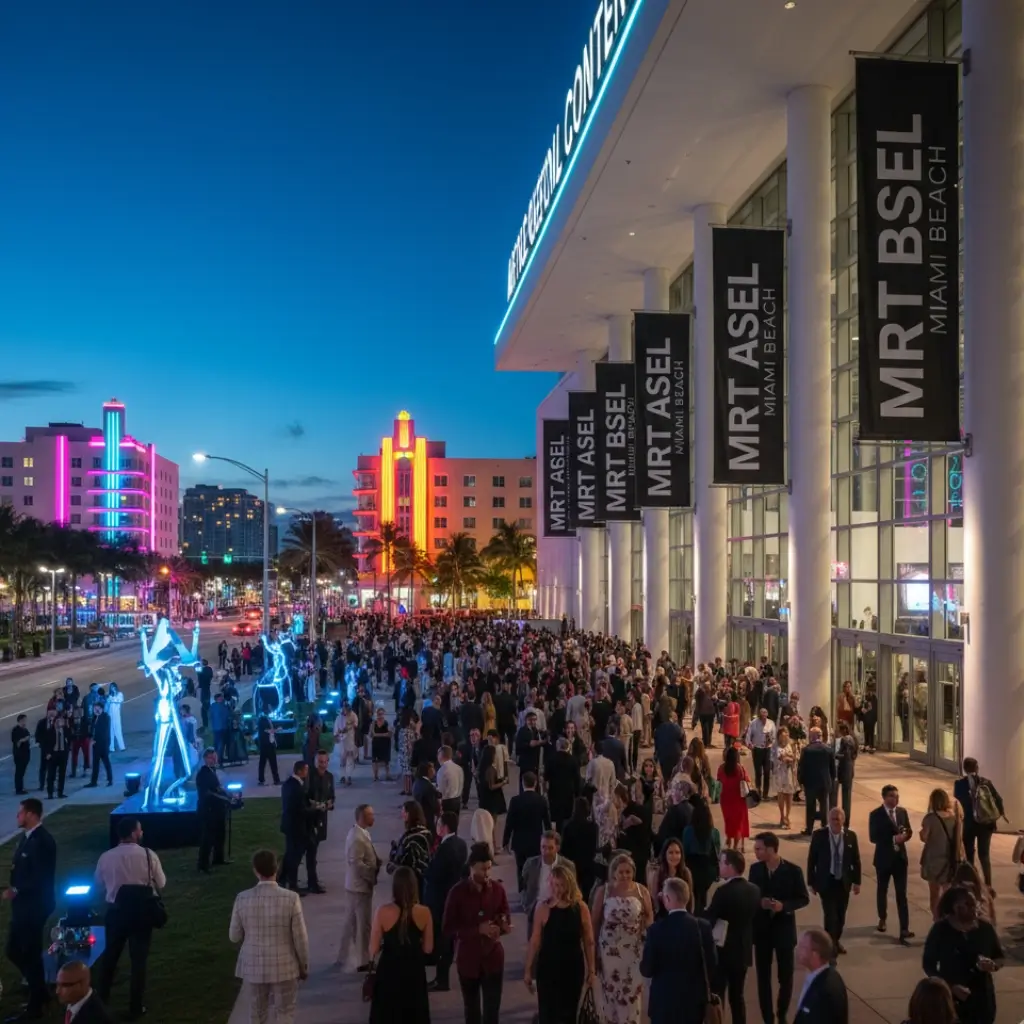
Today, Miami stands proudly as a global center for art and fashion, its reputation cemented by the very elements once considered weaknesses. The tropical city that was shrugged off decades ago has become a trendsetter, often mentioned in the same breath as cultural capitals like New York, London, or Paris – albeit with its own distinctive vibe.
Miami’s “extraordinary melting pot” culture , coupled with its flair for spectacle, has given rise to creative industries that are both world-class and uniquely local. The city now hosts one of the world’s premier art fairs (Art Basel Miami Beach) and one of the top fashion weeks in the Americas, not to mention countless design fairs (e.g. Design Miami), film and music festivals, and art exhibitions year-round.
This concentration of creative events has turned Miami into a year-round destination for artists, designers, models, and media. A curator from Paris or a stylist from São Paulo is as likely to fly into Miami for inspiration or networking as they are to go to traditional hubs. In the span of a generation, Miami’s name has become synonymous with cutting-edge street art, luxury fashion shows, and star-studded cultural galas.
Importantly, Miami’s rise has also boosted its economy and urban development in visible ways. The arts and culture sector now contributes hundreds of millions of dollars annually to the local economy. Neighborhoods once overlooked – Wynwood, the Design District, Little Haiti – have been rejuvenated by galleries, studios, and fashion boutiques.
This gentrification is a double-edged sword, of course, and Miami faces challenges in balancing development with preserving the authentic communities that made these areas interesting in the first place. Yet the general consensus is that the cultural boom has been a net positive, propelling Miami forward. The city that once lacked museums now boasts the striking Pérez Art Museum on Biscayne Bay and the Institute of Contemporary Art in the Design District.
Miami’s art schools and fashion programs have grown as well, attracting students who see a future in Miami’s creative fields. There is a palpable sense that Miami’s creative scene is maturing: homegrown designers are gaining international followings, local artists are headlining major exhibitions, and Miami-based galleries are now regulars at global art fairs.
Perhaps the greatest testament to Miami’s global creative reputation is the caliber of talent and attention it draws. Billionaire art collectors from Europe now make Miami Beach their winter pilgrimage for Art Basel. World-famous architects (from Zaha Hadid to Frank Gehry) have designed buildings in Miami, further blending art and architecture into the cityscape.
Top fashion magazines shoot their editorials on Miami streets, eager to capture that special Miami light and look. Even Hollywood films and TV shows about Miami’s art and fashion scenes are popping up, reflecting wider recognition.
FAQ
When did Miami’s art scene take off?
In 2002 with the launch of Art Basel Miami Beach, which drew global attention.
What is Wynwood Walls?
An outdoor street art park founded in 2009 that transformed Miami’s Wynwood district.
Why is Miami important in fashion?
South Beach’s 1990s supermodel scene and events like Miami Fashion Week made it a fashion hub.
How do immigrant cultures shape Miami’s creativity?
Communities from Cuba, Haiti, Colombia, and beyond infuse art, fashion, and festivals with multicultural energy.
In essence, Miami has turned its once outsider status into a strength – it isn’t bound by old-world traditions or cold metropolitan attitudes. Instead, it offers fresh energy, a collision of cultures, and a bit of tropical indulgence, which together foster creativity.
City leaders actively court creative industries, knowing their value. Annual events like Art Basel or Miami Fashion Week aren’t just parties; they’re pillars of Miami’s identity.
And beyond the big events, the day-to-day creative pulse of the city keeps strengthening – from street artists painting new murals in Wynwood, to indie fashion designers launching boutiques in Little River, to multimedia artists experimenting in studios in Allapattah.
The Magic City has proven that a place known for leisure can evolve into a locus of culture.
